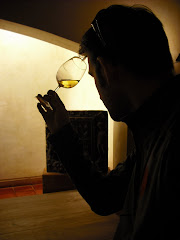Oh boy! Hang on a second! Don’t you start with buying the grapes first? The short answer is, maybe. You see, years ago, the situation was generally like so: Around mid-September a farmer or grape importer/purveyor would simply set up shop in a market for just a few weeks (the importers were like members of my family who would bring crate loads of grapes, delivered by train, to Toronto from California). People would come from all over the neighbourhood to buy cases of grapes of whatever variety they fancied. Generally, the grapes were brought home already crushed by the purveyor’s crusher and placed into pails, skins, stems, seeds and all. A few days would pass and the juice-skin mixture, called the ‘must’, would start to ferment. Then, the whole mish-mash was pressed and all the juice would flow out into a collecting pail for the rest of the fermentation process.
The process was messy, very large scale (it often took 85 pounds of grapes to make two cases, 24, bottles of wine), and generally done outside. In addition, people that bought juice from starting with crushed grapes had to put in the extra effort to extract colour, especially for red wine (more on this later). Over the years, the consumer has gained a few more options to make the process simpler and more friendly so that first-time winemakers can join in the fun.
Now, you can buy the juice from the purveyor already processed. Crushing and pressing is done for you, the colour is all extracted, the yeast is already fermenting away because it lives on the skins of the grapes, and sometimes, a laboratory technician will “balance” the juice to the appropriate acidity and sugar content to make great wine. This is known as a “fresh juice format” because the yeast has already started working to convert sugar into alcohol and carbon dioxide (the source of the characteristic “fizz” you see). This is a great format for those that don’t want to deal with the mess of pressing grapes. However, I wouldn’t recommend it for a beginner because the juice has to be worked with right away and hence, won’t wait for you to take a workday off so you can tend to it. Generally, the juice is stored in large fridges to slow the fermentation process until the customer is ready to buy it. There are also even simpler options for the beginner.
If you want the juice to sit around ‘silent’ until you are ready. The “pasteurized” or “wine-kit” format is the right one for you. In this format, the juice is made just like the above fresh format but is flash heated. This “pasteurization” is intended to kill (or at least stun) the yeast living inside the juice. These formats generally come with all the instructions you need to make good wine and come with all the ingredients you may want along the way. Most important of these ingredients is the yeast culture that you’ll add back into the juice when you are ready. Because they aren’t actually fermenting when you purchase them, these juices can be kept at room temperature and can be made into wine at any time of year.
Even more exciting is the fact that you can buy pasteurized juices from grapes sourced internationally.
After my first (and botched) attempt at making wine from crushed grapes, I swallowed my pride and opted for a wine kit. It’s the best place to start and you’ll almost never run into any rude surprises along the way.
What about the price? It’s the same concept as buying anything at all – you pay more for convenience. Pasteurized formats cost anywhere between $60-$150 (yielding 30 bottles of wine, and higher quality generally commands a higher price), while pressed juice ranges from $35-90 (also making 30 bottles) and the price is just a tad cheaper when buying a corresponding amount of grapes.
The entire process to make wine from a kit lasts 4-8 weeks, depending on its quality. In addition, these wines generally benefit from aging, from a month to a year, before enjoying them.

Fall 2008: I enlisted the help of my best friend Nader (left) for this batch. Over 250 litres of Cabernet Sauvignon, Merlot and Cabernet Franc juice and 100 pounds of skins went into the drums behind us.
Here we are, you’ve learned about your tastes in wine, decided on a format you wish to purchase and now the work (fun) begins!

No comments:
Post a Comment